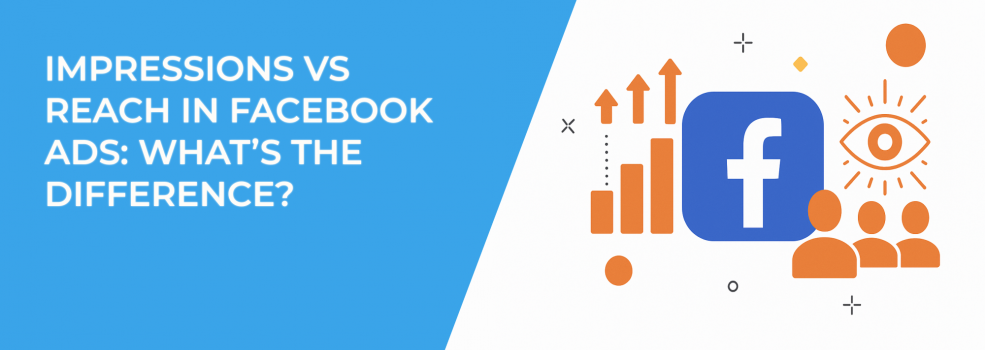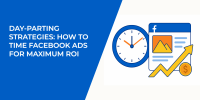When you launch a Facebook ad campaign, two numbers usually stand out in Ads Manager: impressions and reach. They might look similar at first glance, but they measure very different things. Understanding the difference is critical if you want to know whether your ads are actually getting attention or just showing up repeatedly to the same group of people.
So, what do these terms really mean, and how should you interpret them in your campaigns?
What Is Reach in Facebook Ads?
Reach is the number of unique people who saw your ad. If your campaign reached 10,000, that means 10,000 individual accounts were served your content at least once.
Think of it as the “how many” metric. How many different people have actually laid eyes on your ad?
Reach is particularly valuable when you want to:
-
Introduce a new product to as many people as possible.
-
Build brand awareness across a wide audience.
-
Test how different demographics respond to your messaging.
In short, reach is about expansion. It tells you how far your campaign has traveled outside your immediate circle and whether your ads are finding fresh audiences. If you’re running into problems with low visibility, this guide on fixing low ad reach can help you troubleshoot.
What Are Impressions in Facebook Ads?
Impressions count every time your ad was displayed, regardless of whether it was the same person seeing it multiple times.
If one user saw your ad five times, that adds up to five impressions but only one reach.
Impressions are useful because they show how often people are being exposed to your campaign. They help answer questions like:
-
Is my budget being spent on fresh eyes or repeat exposures?
-
Are my ads showing often enough to make people remember them?
-
Could I be pushing too hard and annoying the audience?
This metric gives you a sense of repetition. While reach measures scale, impressions reveal intensity—the volume of ad views your campaign is delivering. For a deeper dive, see what Facebook ad impressions really mean.
The Key Difference Between Reach and Impressions
Here’s the simplest way to think about it: reach tells you how many people, impressions tell you how many times.
The relationship between the two is captured in another important metric: frequency. Frequency is the average number of times each person saw your ad, and it’s calculated as impressions divided by reach.
-
Low frequency (for example, 1.1) means most people saw the ad only once.
-
High frequency (for example, 7.5) means your audience is being shown the same creative many times.
Frequency bridges the gap between reach and impressions. It shows whether your campaign is leaning toward wide exposure or concentrated repetition, which directly influences how people perceive your brand. Learn how frequency capping helps beat ad fatigue if your audience starts seeing too much of the same creative.
When Should You Care More About Reach?
Imagine you’re launching a new online store and want as many people as possible to know it exists. In this case, reach is your star metric. You want your ads landing in front of as many unique users as possible, even if each one only sees it once or twice.
For top-of-funnel campaigns, reach helps you measure your true visibility. It’s a way to see whether your ad is spreading out to different audience segments or staying stuck in a small circle.
When Do Impressions Matter More?
Now let’s flip the scenario. Suppose you’re running a retargeting campaign for people who visited your website but didn’t purchase. These are warm leads. They already know you exist, but they may need a little reminder to come back.
Here, impressions become more important. You want these users to see your ad multiple times so the message sticks. Frequency plays a role, but impressions tell you whether that repeated exposure is happening at all.
For remarketing, brand reinforcement, or event promotions, impressions give you the clarity you need to decide whether your ads are being served enough to make an impact. A practical way to set this up is by using Facebook retargeting strategies tailored to audiences who already know your brand.
Practical Tips for Balancing Reach and Impressions
Both metrics matter, but the balance depends on your campaign goal. Here are some strategies advertisers often use:
-
Monitor frequency closely. If frequency creeps too high, refresh your creative or broaden targeting to avoid fatigue.
-
Use reach for awareness campaigns. Aim for maximum unique exposure when you’re building recognition.
-
Leverage impressions for retargeting. Multiple touchpoints help keep your brand top of mind for people already in your funnel.
-
Test audience sizes. Smaller audiences may drive high impressions but low reach. Larger audiences spread your message but may dilute frequency.
-
Align with campaign objectives. Facebook’s algorithm optimizes differently depending on whether you select Awareness, Traffic, or Conversions.
Taken together, these practices help you balance scale with repetition. Instead of blindly chasing big numbers, you can decide whether your ads should focus on finding new people, staying visible to warm leads, or doing a bit of both.
The Bottom Line
Reach shows how wide your campaign spreads, impressions show how many times your ads appear, and frequency ties the two together.
Understanding these differences gives you sharper control over ad performance. It helps you decide whether your budget is building awareness, reinforcing a message, or wasting dollars on repetitive views.
So next time you’re inside Ads Manager, ask yourself: Am I reaching enough unique people, or am I just stacking impressions on the same audience?

